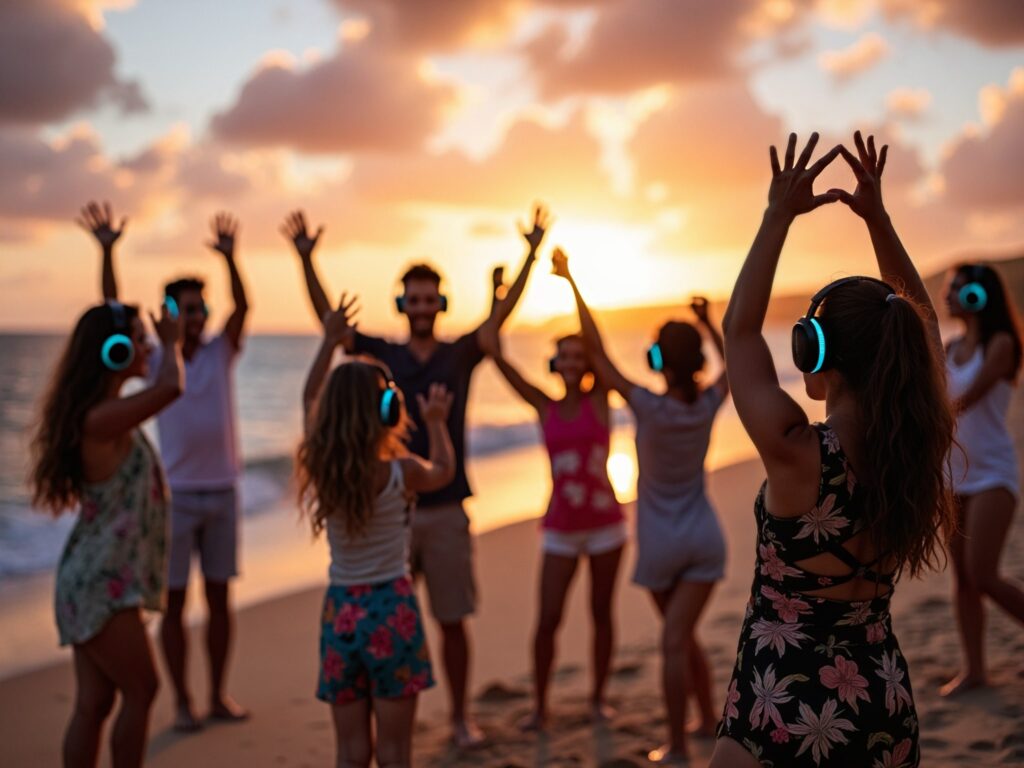
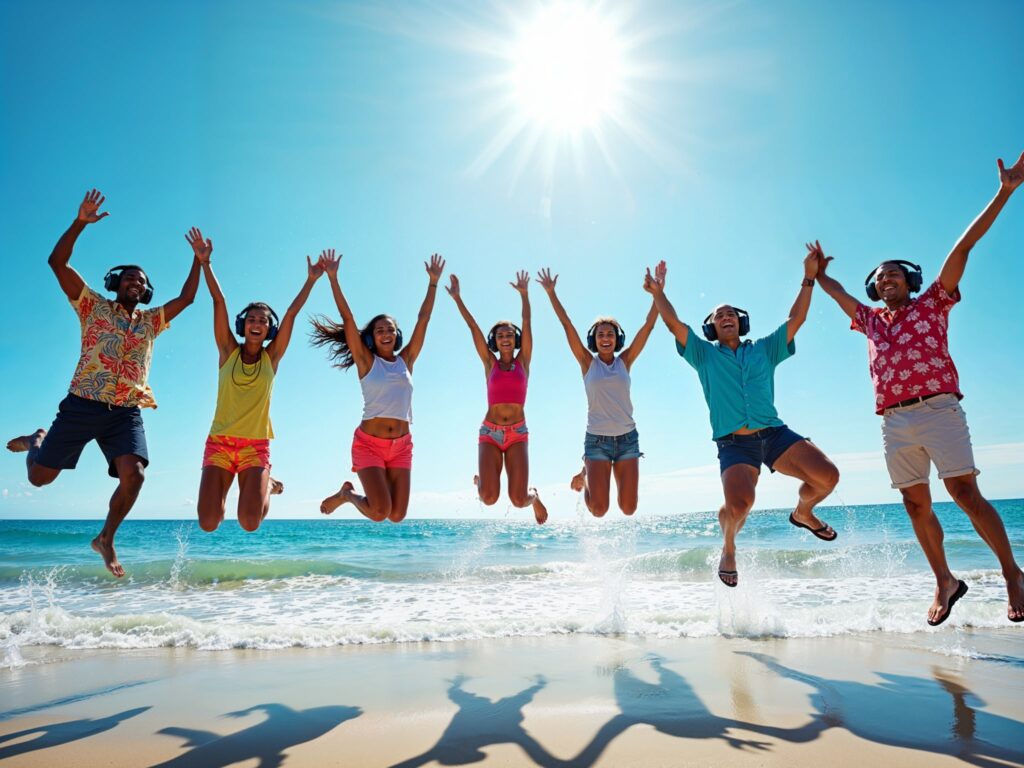


Gentle, rhythmic movements improve heart health and stamina.

Free-form dance improves muscle tone, joint flexibility, and physical resilience.

Intuitive movement sharpens body awareness and motor skills.

Let go of stress stored in the body as you move freely.

Energize your day with invigorating, full-body movement that boosts your energy levels naturally.
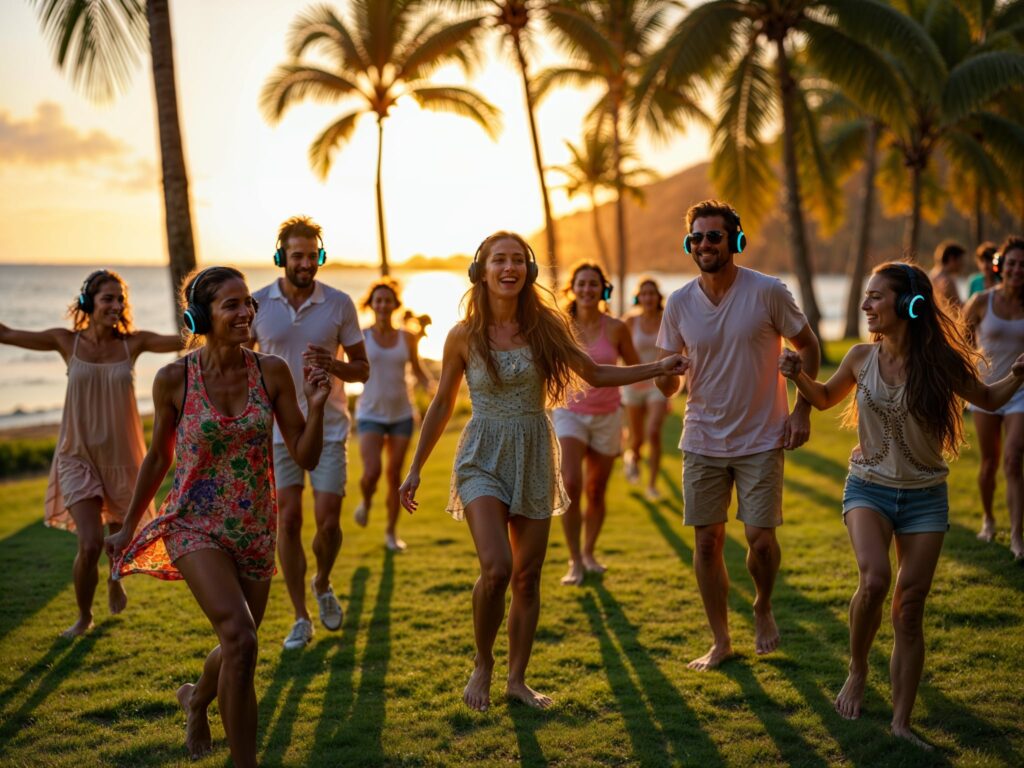
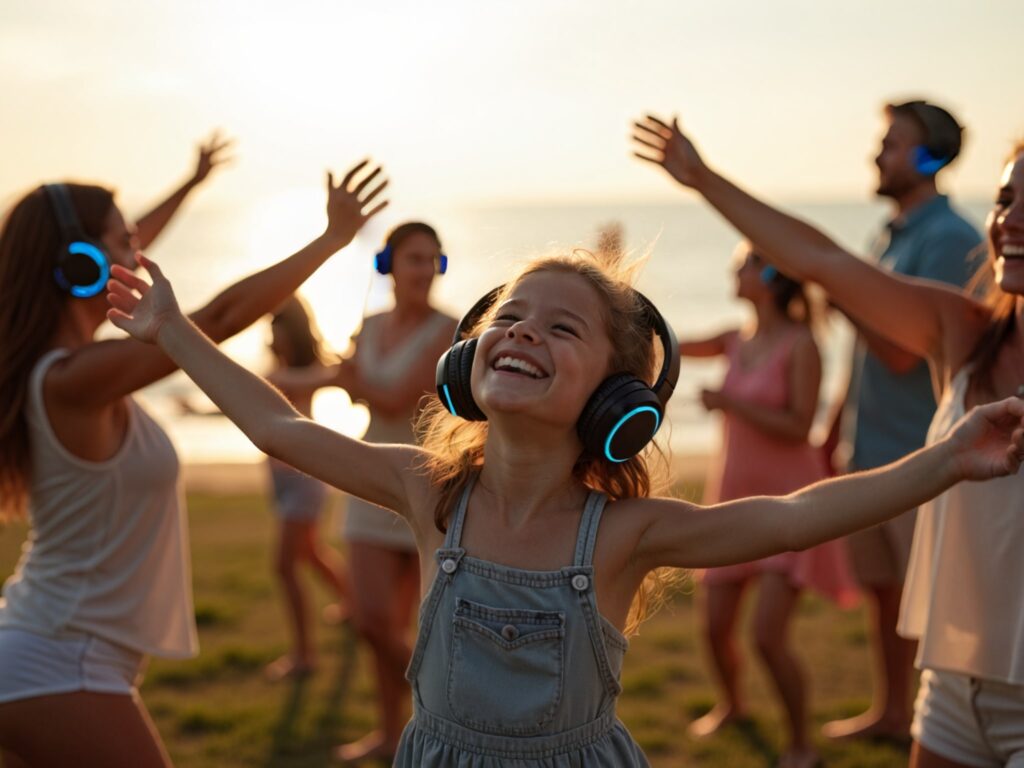

Reduce Stress and Anxiety:
Calming prompts and music induces flow states that soothes the psyche and disrupts the default-mode network of the brain.

Boost Mood:
Movement releases endorphins, fostering happiness and emotional resilience. Playful prompts connect you with your inner child and express true joy.

Foster Mindfulness:
Connect deeply with the present moment through breath, movement, and deeper awareness.
Encourage Emotional Expression:
A safe, nonjudgmental space to release emotions, experiment, and rediscover your authentic self-expression. Everyone dances differently, everyone is goofy in unique ways. Dance how you feel.

Increase Self-Confidence:
Discover your natural ability to move freely and authentically. It’s amazing what a fun group dance party can do for our self-esteem.

Strengthen Relationships:
Celebrate together, forging meaningful connections through movement and shared experiences.

Family Bonding:
Create life-long memories with your loved ones in a welcoming, inclusive environment immersed in nature.

Meet Like-Minded People:
Dance alongside others who value fun, wellness, and nature.

Enhance Creativity:
Free-form movement and mindfulness has been proven to spark innovative thinking and creativity.

Boost Cognitive Function:
Engaging in new movements combined with mindful prompts improves memory and focus and deepens self-awareness.

Support Brain Health:
Complex, varied movement patterns promote neuroplasticity and overall brain health.

Embrace Being in the Now:
Unchoreographed, intuitive dance has been practiced for centuries for spiritual purposes across cultures and going all the way back to early shamanic practices.

Discover Inner Peace:
Meditative and playful prompts encourage introspection, self-discovery, and personal growth.

Connect with Nature:
Sessions are set in stunning outdoor locations, grounding you in the beauty of the natural world and allowing you to experience it in new ways.

Experience Harmony:
Align your mind, body and spirit with the rhythm of nature, feeding new life into your authentic self with good vibes energy that increases optimism, promotes serendipity, and grounding.
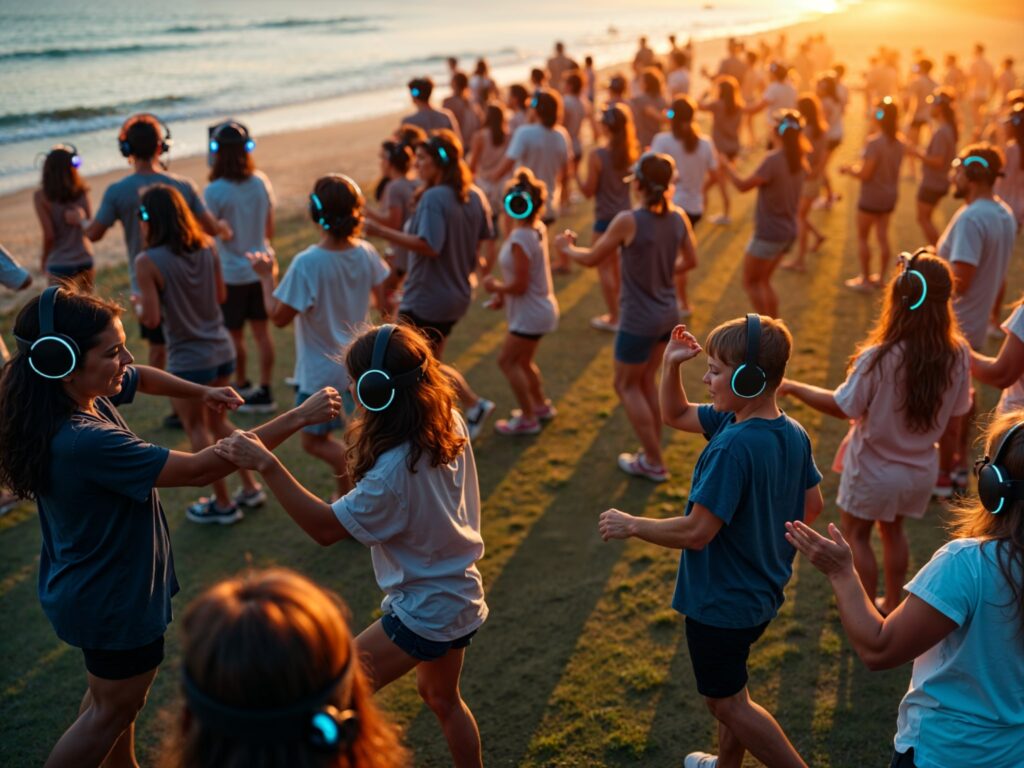
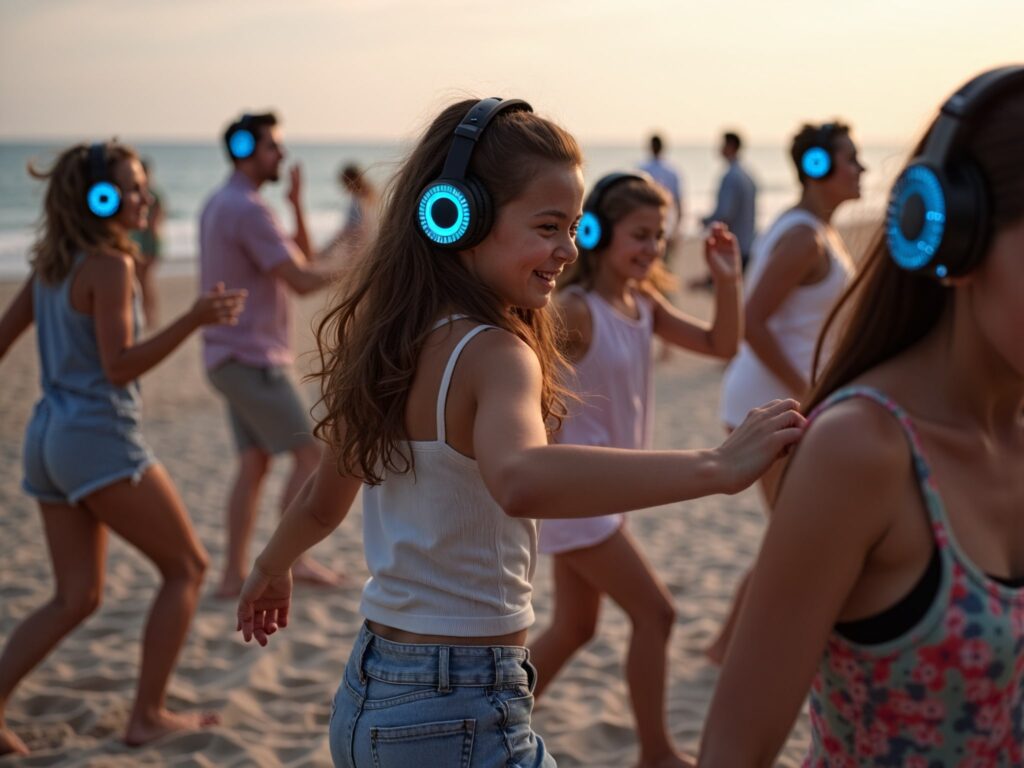
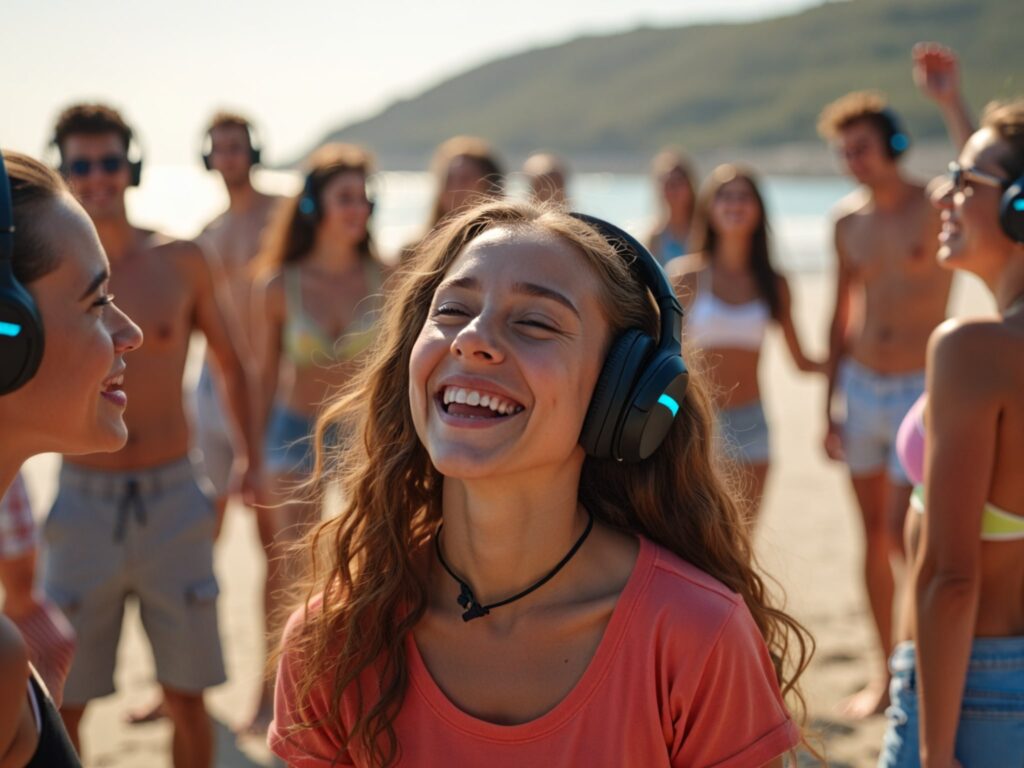
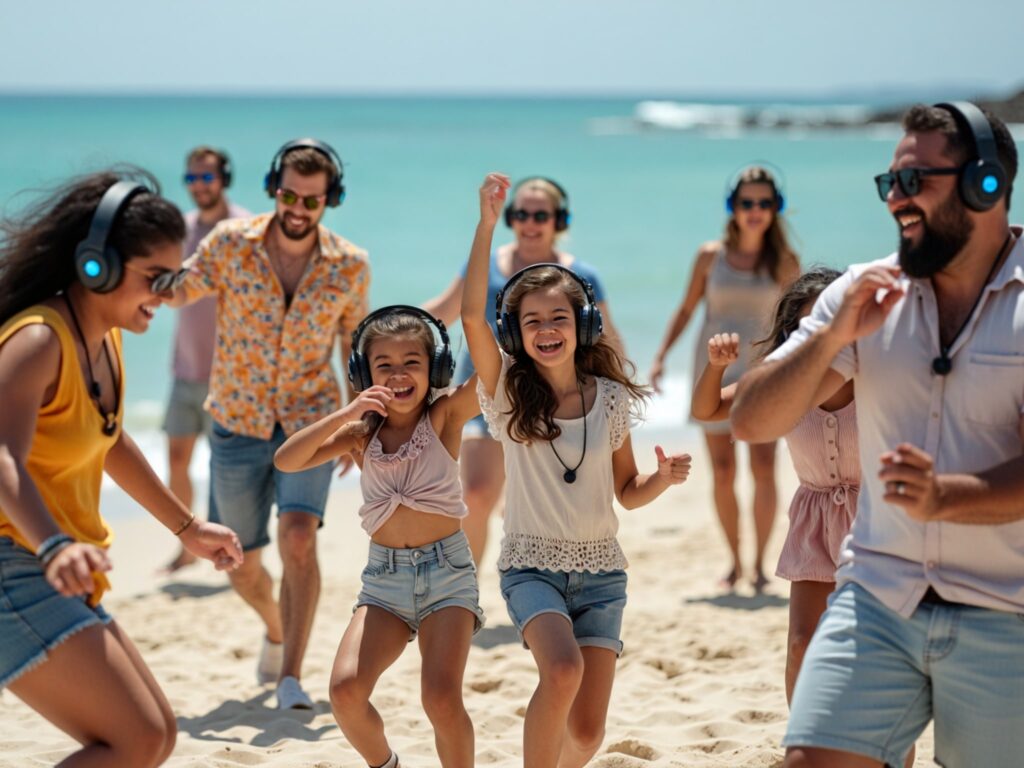
Dancing Meditation uniquely blends movement therapy, mindfulness, nature immersion, and music to create a transformative wellness practice.
These elements are supported by robust scientific research demonstrating benefits across the well-being spectrum, including significant physical, socio-emotional, neuropsychological, and cognitive benefits.
Taken together, there is no doubt that Dancing Meditation can positively impact your holistic health and improve your well-being, especially if you commit to the proactive as a part of your lifestyle.
Whether you’re seeking joy, clarity, or a sense of release, Dancing Meditation provides the space to find your flow and express your true self.
Dance has long been celebrated as a powerful tool for enhancing physical, emotional, and social well-being. With recent scientific advances, dance has emerged as a cornerstone in the future of natural wellness, integrating physical, emotional, emotional, spiritual and social health.
Studies confirm that dance-based activities enhance quality of life and well-being along with other physical, mental, emotional, and social benefits.
Below you can see a list of some of the scientific research that backs up some of the benefits Dancing Meditation provides. We divided the research vectors into the following sections:
Below you can click to read the research papers in each area for yourself.
Colin, N., & Stamp, K. (2024). Why Dance? An Introduction to Dancing for Health and Wellbeing. In Dancing (pp. 1-11). Emerald Publishing Limited. (https://www.emerald.com/insight/content/doi/10.1108/978-1-83753-912-320241002/full/html)
Chen, Y., Wang, S., Senanu Ametefe, D., & John, D. (2024). Impact of Dancing on Physical and Mental Health: A Systematic Literature Review. Dance Research, 42(2), 220-256. (https://www.euppublishing.com/doi/abs/10.3366/drs.2024.0432)
Murcia, Cynthia & Kreutz, Gunter & Clift, Stephen & Bongard, Stephan. (2010). Shall we dance? An exploration of the perceived benefits of dancing on well-being. Arts & Health. 2. 149-163. 10.1080/17533010903488582. (https://www.researchgate.net/publication/233448438_Shall_we_dance_An_exploration_of_the_perceived_benefits_of_dancing_on_well-being)
Alpert PT. The Health Benefits of Dance. Home Health Care Management & Practice. 2011;23(2):155-157. doi:10.1177/1084822310384689 (https://journals.sagepub.com/doi/10.1177/1084822310384689)
Tao, D., Gao, Y., Cole, A., Baker, J. S., Gu, Y., Supriya, R., Tong, T. K., Hu, Q., & Awan-Scully, R. (2022). The Physiological and Psychological Benefits of Dance and its Effects on Children and Adolescents: A Systematic Review. Frontiers in physiology, 13, 925958. https://doi.org/10.3389/fphys.2022.925958
Scientific studies show that dance can significantly lower cortisol, the primary stress hormone, while increasing endorphin levels, creating a natural stress-relief cycle. Movement combined with mindfulness has been proven to help you become present, fostering relaxation, promoting authentic creativity and innovation, and reducing anxiety and depression. Dance is a proven pathway to natural stress reduction and relaxation. Indeed, Dancing Meditation is intended to send your mind on vacation. Below are some of the key research articles supporting this.
Dance has proven benefits for mental health, from reducing symptoms of depression to boosting serotonin and dopamine levels, the body’s natural happiness hormones. Dancing Meditation’s expressive free-form framework provides a safe outlet for emotions, leading to improved self-awareness and emotional balance.
Free-form dance offers a safe space for emotional expression, allowing participants to process feelings in a non-verbal, embodied way that has been shown to be an effective intervention into adults with depression.
Dancing has been proven to boost mood and self-esteem.
Dance is not just physical—it’s a mental workout. Studies reveal that engaging in complex movement patterns enhances neuroplasticity, supporting memory and cognitive flexibility. Dancing also improves focus and attention by syncing body movement with mental intention, all while increasing moments of flow where you release your ego and embody your true joyful self
Neuroplasticity and Memory:
Engaging in dance promotes neuroplasticity and enhances memory by activating the hippocampus.
Mindful Focus:
Aligning movement with mindfulness enhances attention and cognitive flexibility.
From cardiovascular health to improved mobility, dance offers a low-impact yet effective way to be active and participate in wellness activities, having massive positive impact for participants of all ages, from children to elderly adults. Studies confirm that Dancing Meditation has potential to improve joint health, muscle strength, and overall physical resilience. Dance is particularly accessible, making it a lifelong fitness option for almostg all body types, and almost all fitness levels.
Cardiovascular Fitness:
Moderate-intensity dance improves cardiovascular health and stamina.
Flexibility and Mobility:
Dance helps release muscular tension and improves joint mobility.
Outdoor movement amplifies the therapeutic effects of dance. Immersion in natural environments reduces stress hormones, lowers blood pressure, and promotes mental clarity. Dancing in nature, as part of recreational wellness, combines physical activity with grounding energy, creating a holistic healing experience that connects us with our ancestral roots.
Nature’s Calming Effect:
Immersion in nature reduces blood pressure, stress hormones, and heart rate.
Grounding Through Movement:
Outdoor physical activities enhance mood and reduce mental fatigue.
Music’s ability to activate the brain’s reward systems pairs perfectly with dance, fostering emotional regulation and a sense of joy, serendipity, play, and authentic self-expression. Additionally, research shows rhythmic movement enhances group cohesion, encourages social bonding, and places participants in a state of flow—ideal for stress reduction and creativity.
Music and Emotional Regulation:
Music activates the brain’s reward system, fostering emotional regulation.
Rhythmic Synchronization:
Moving to a beat aligns body and mind, fostering a state of flow and enhancing group cohesion.
Dancing Meditation’s intended role in enhancing empathy and trust, particularly in group settings. Research shows that participants often experience a sense of belonging and mutual support through synchronized movement.
We do our best to keep track of the most recent research related to the scientific benefits of Dancing Meditation and you can follow along and view the research publications on our Publications Page.
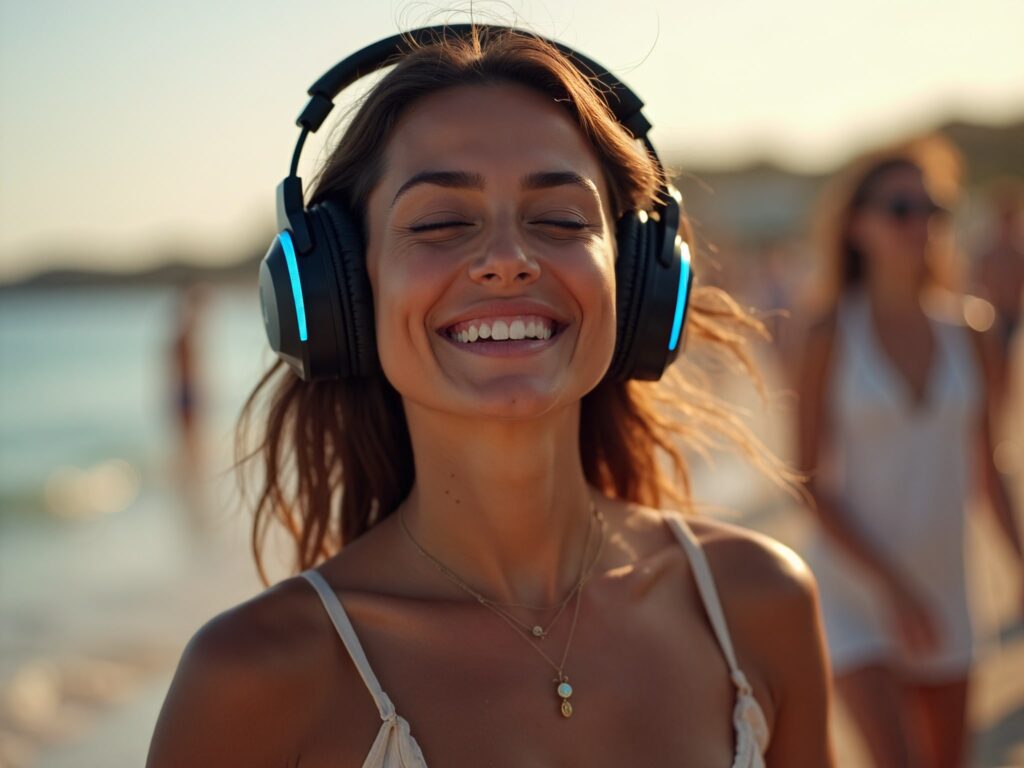

Get Started
Book your Maui Dancing Meditation experience now!
You’re guaranteed to have a blast, feel amazing, and create life-long memories.
Spaces are limited and early reservations are highly recommended — select your date and location and reserve today!
Copyright © 2025 Dancing Meditation